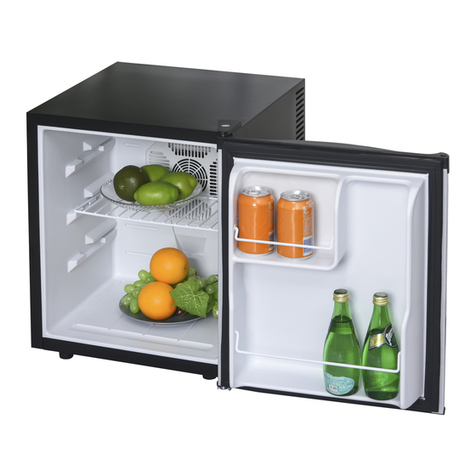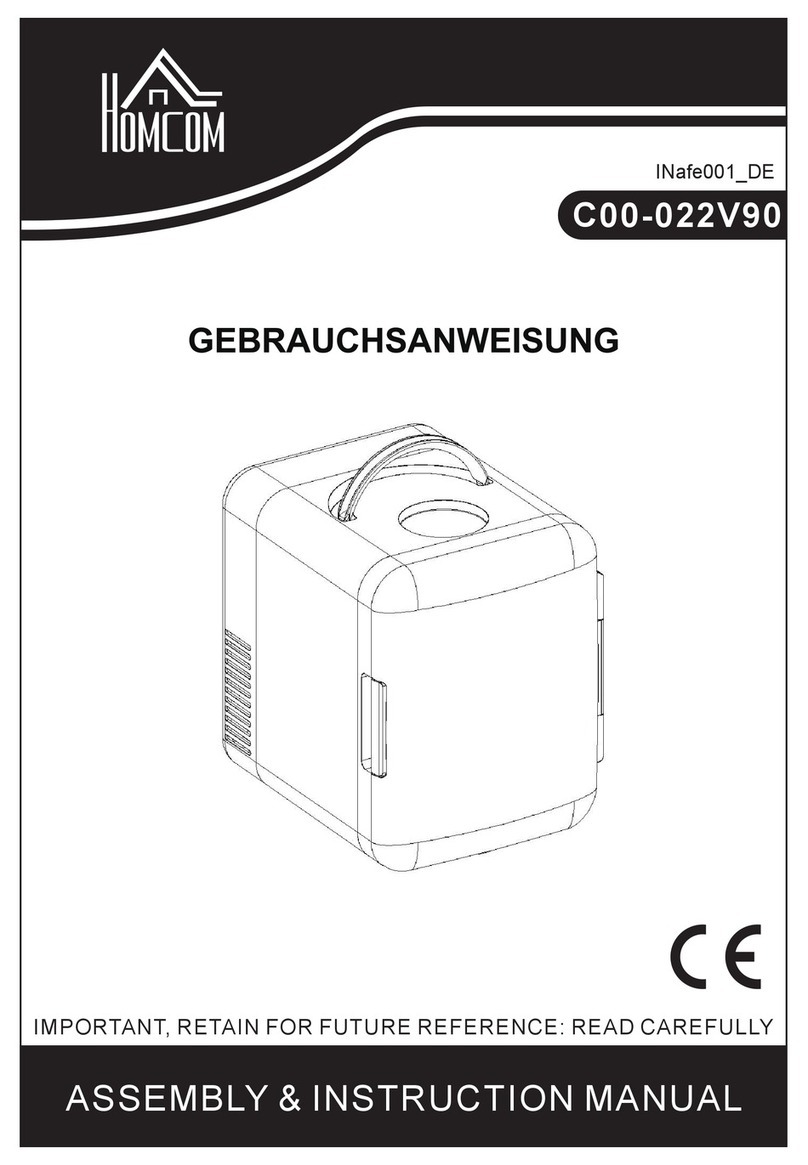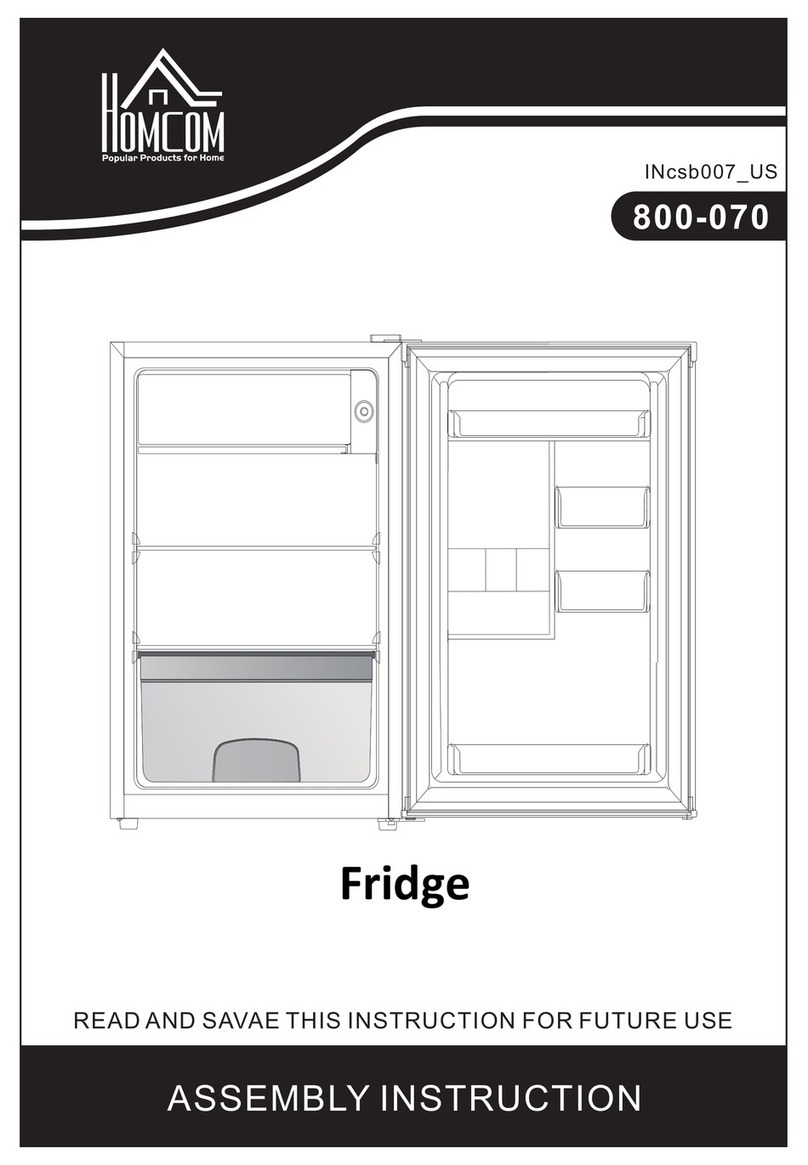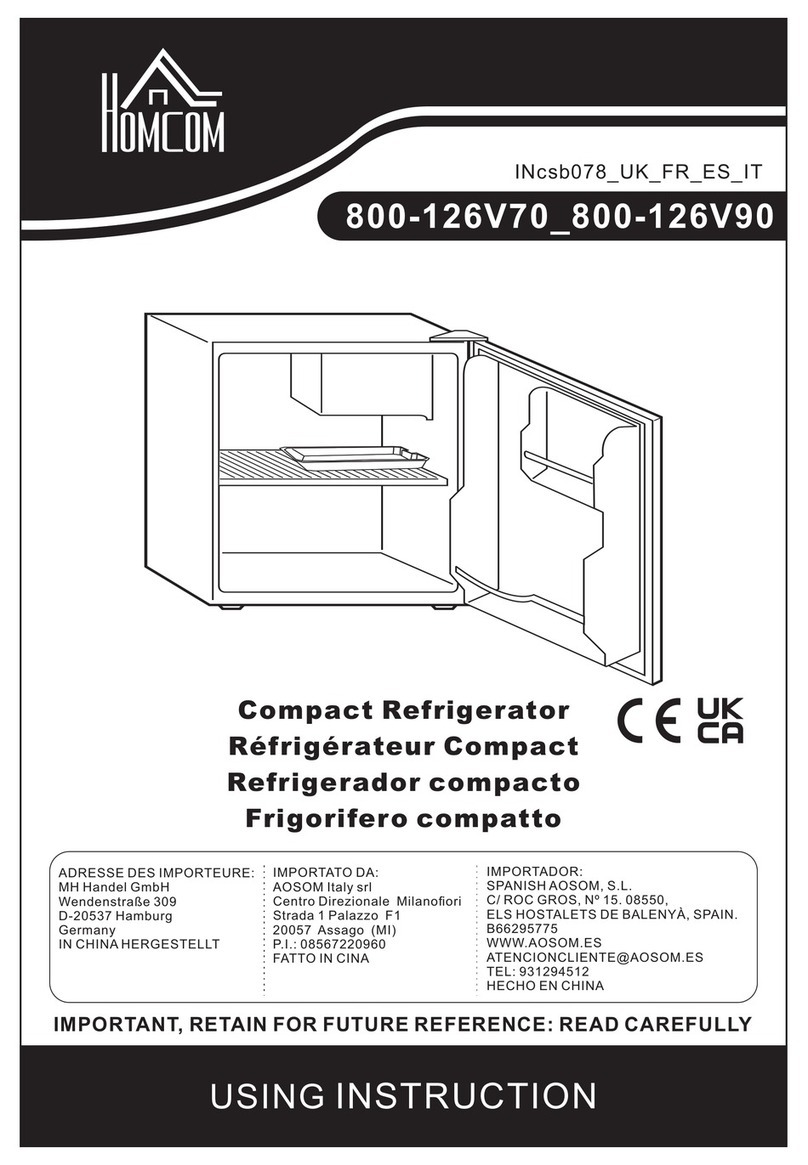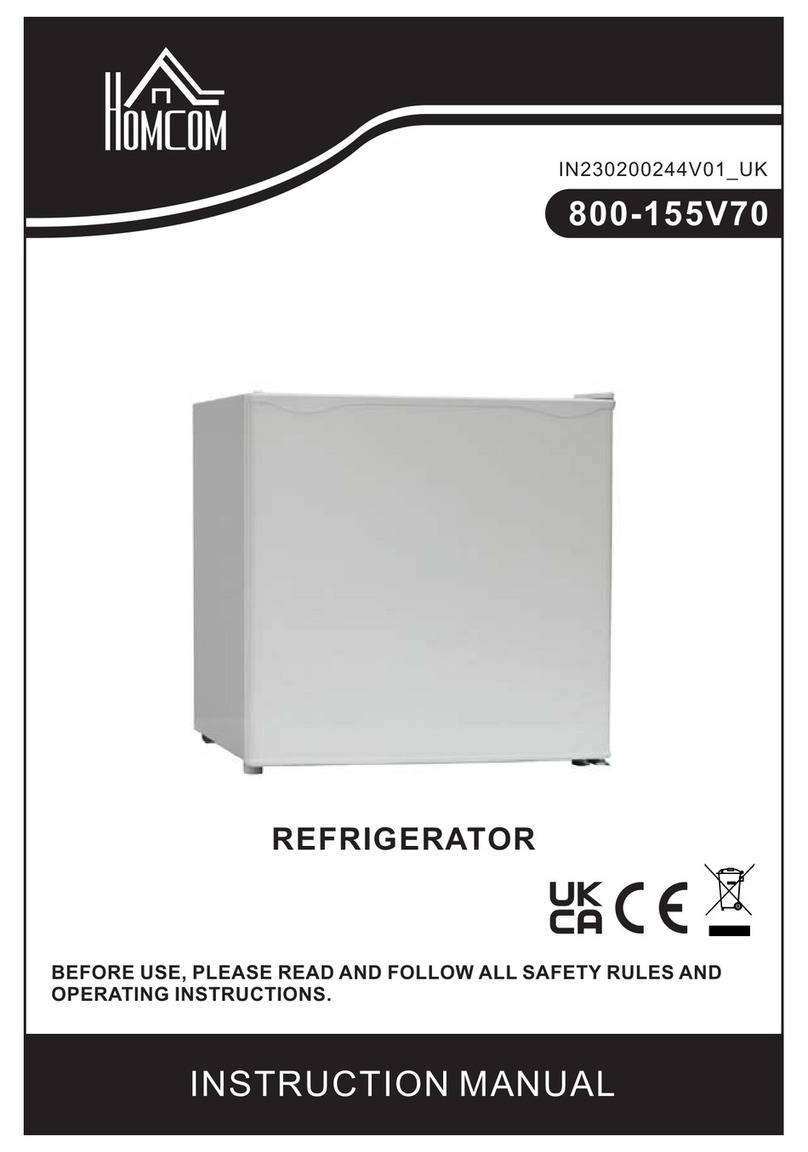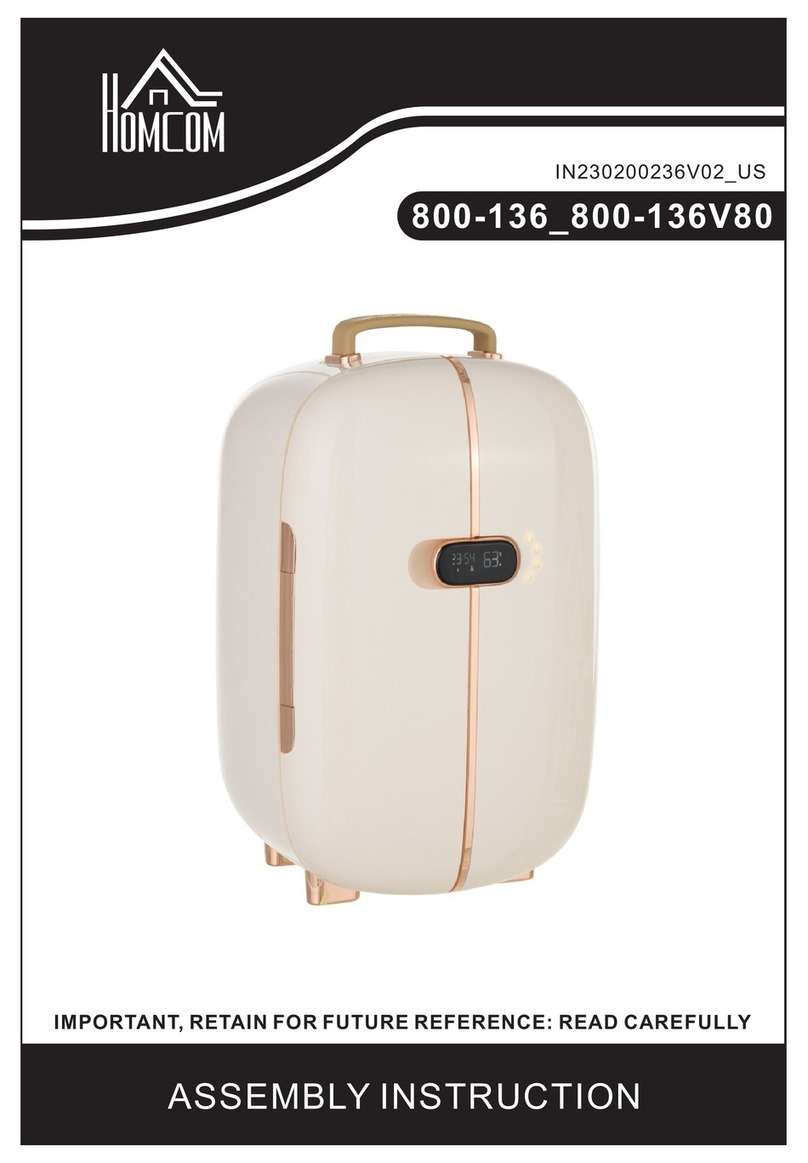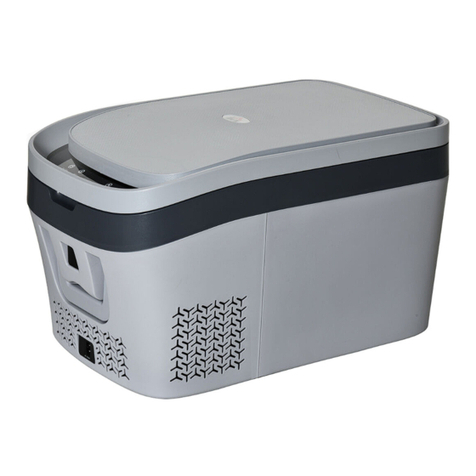
~ 2 ~
avoid open flames and sources of ignition
It is dangerous to alter or modify this product in any way. Any damage to the cord may cause a short
circuit, fire and/or electric shock.
This appliance is intended for domestic use only
Power cord must not be lengthened.
Ensure the power plug is not squashed or damaged by the back of the appliance as this can cause the
cable to overheat a cause a fire.
Ensure you can access the mains plug of the appliance easily
When unplugging the appliance always pull the plug from the mains socket, do not pull on the cable
If the power plug socket is loose, do not insert the power plug. There is a risk of electric shock or fire.
This appliance is heavy. Care should be taken when moving it.
Do not remove nor touch items from the freezer compartment with damp/wet hands, as this could
cause skin abrasions or frost/freezer burns.
Avoid prolonged exposure of the appliance to direct sunlight.
Daily Use
Do not put hot items on the plastic parts in the appliance.
Do not place food products directly against the rear wall.
Frozen food must not be re-frozen once it has been thawed out.1
Store pre-packed frozen food in accordance with the packaged instructions.
Manufactures storage recommendations should be strictly adhered to. Refer to relevant sections in this
manual.
Do not place carbonated drinks in the freezer compartment as it creates pressure on the container,
which may cause it to explode, resulting in damage to the appliance.1
Do not put ice/ice lollies taken directly from the freezer into your mouth as this can cause frost burns.2
Care and Cleaning
During cleaning and maintenance, please ensure you unplug the appliance from the mains supply.
Do not clean the appliance with metal objects.
Do not use sharp objects to remove frost from the appliance. Use a plastic scraper.1
Regularly examine the drain in the refrigerator for defrosted water. If necessary, clean the drain. If the
drain is blocked, water will collect at the bottom of the appliance.2
1 model with a freezer compartment
2 model with a fresh-food storage compartment
